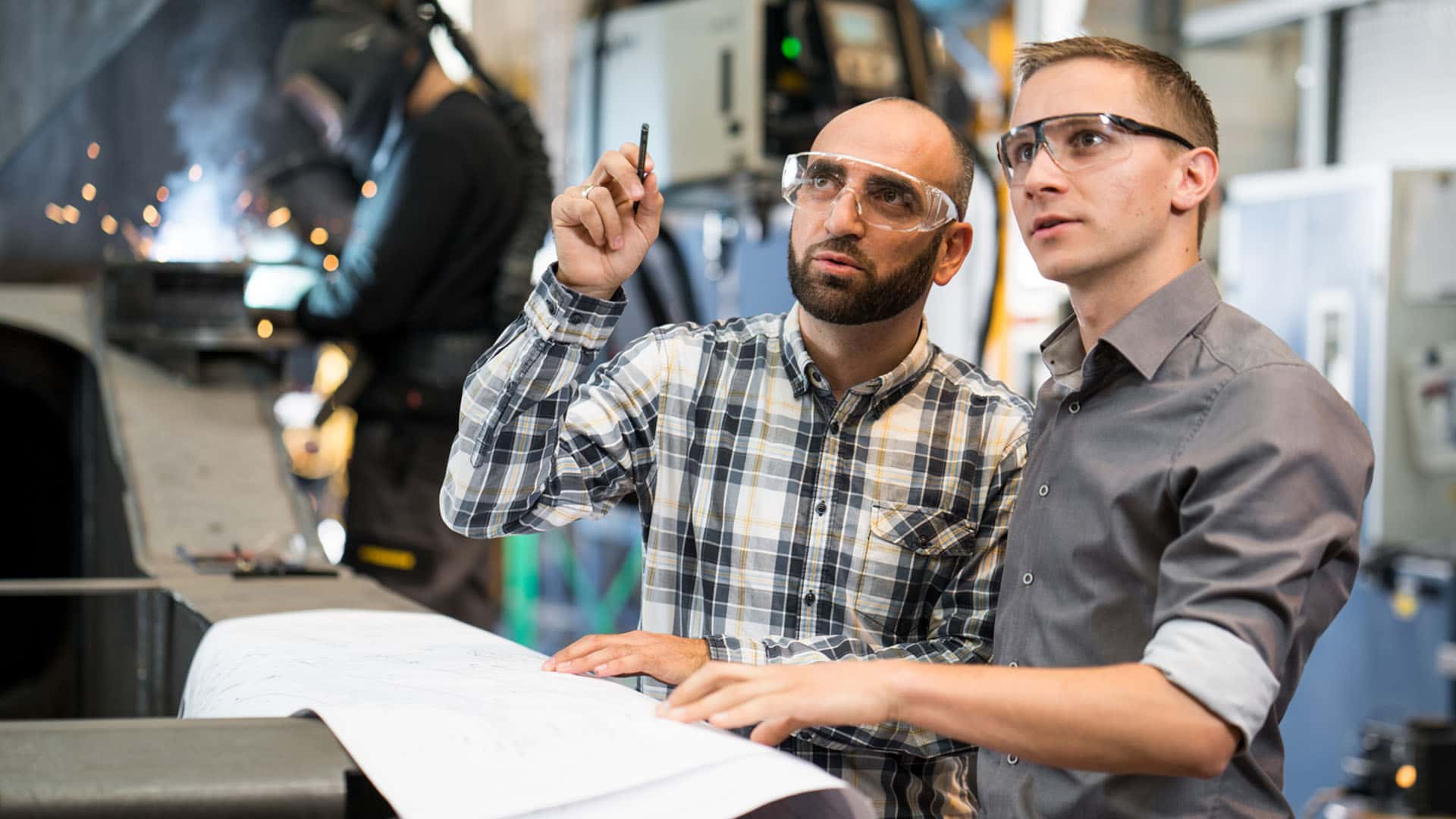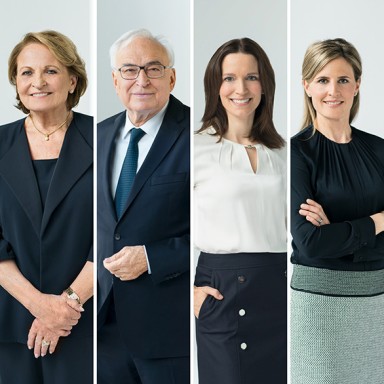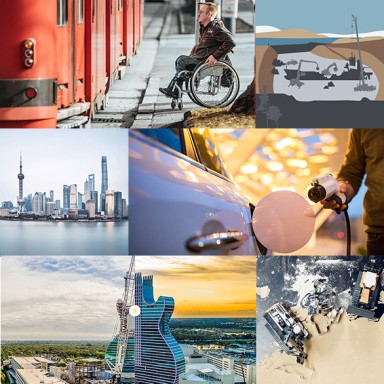 Group
GroupAnnual Report 2020
Turnover worldwide € m
Overall economic performance
According to the International Monetary Fund, the global economy shrank by 3.5 % in 2020, less drastically than was assumed at the beginning of the corona pandemic. Industrialised economies shrank by 4.9 %, whilst the economic downturn among emerging and developing nations was far less severe, with a decrease of only 2.4 %. China was the only major economy to achieve modest growth (2.3 %). The US economy shrank by 3.4 % compared with 2019. The pandemic affected the eurozone far more severely, where economic performance dropped by 7.2 % compared with the previous year. The World Trade Organisation reported that international trade volume declined by 9.2 %. Around the world, the sale of goods was disrupted, in some cases significantly, by nationwide lockdowns, travel restrictions and planning uncertainties caused by the pandemic.
Although the global economy had already begun to slow down modestly towards the end of 2019, Liebherr still closed out the year with a strong volume of orders which continued into the first quarter of 2020. Starting at the end of the first quarter, however, the coronavirus pandemic began to affect business activities in many markets. This also had an impact on the Group’s sales. With the exception of Refrigeration and Freezing, every product segment experienced a decline in sales. Sales in construction and mining machines reached € 6,848 million, 10.4 % lower than in the previous year. This includes the Earthmoving, Material Handling Technology, Deep Foundation Machines, Mobile and Crawler Cranes, Tower Cranes, Concrete Technology and Mining product segments.
The other product segments, including Maritime Cranes, Aerospace and Transportation Systems, Gear Technology and Automation Systems, Refrigeration and Freezing, Components and Hotels, achieved total sales of € 3,493 million, a 15 % decrease compared to the previous year.
There were significant regional disparities in terms of sales in 2020. There was a downturn in sales in the European Union, which has traditionally been the Group’s strongest sales region. This was primarily due to declining sales in Germany and France; by contrast, business grew in Austria and Poland. Sales in non-EU countries fell as well. The Group also saw a decline in sales in North America, as well as in Central and South America, Africa and the Near and Middle East, all of which reported significantly lower sales than the year before. Meanwhile, business was stable throughout the year in Asia and Oceania. This was thanks largely to strong demand from China and Australia.
Net result for the year
The Liebherr Group achieved net profits of € 7 million in 2020. The operating result decreased compared to 2019, as did the financial result. In view of the year's special challenges and difficult conditions, this can nevertheless be considered a success.
The qualifications, enthusiasm and commitment of the Group‘s employees make a key contribution to its business success. Liebherr’s long-term commitment to its employees is in keeping with its tradition as a family-owned company.
At the end of 2020, the Group employed 47,925 people worldwide. Despite a notable decline in sales, the number of employees decreased only slightly by 124, or 0.3 %, compared to the previous year. The number of employees rose in Europe, Asia and Oceania. Meanwhile, there was a decrease in the number of Liebherr employees in North America, Central and South America, Africa and the Near and Middle East.
Even during the coronavirus pandemic, Liebherr maintained its reputation as an attractive employer. For instance, the training programme was continued despite the economic uncertainty. In 2020, 400 new trainees and apprentices started their careers at Liebherr locations in Germany, Austria and Switzerland alone.
Sustainability
The Group aspires to generate sustainable value for its employees, customers and suppliers and for society as a whole. As an independent family company with a long-term focus, Liebherr is aware of its responsibilities and is committed to sustainable development. Its products, processes and infrastructure are geared to the minimum possible consumption of resources. The focus in all areas is on safety, efficiency and environmental sustainability. Last year, a large number of the Group’s companies worked on projects looking at social, environmental and economic aspects of sustainability.
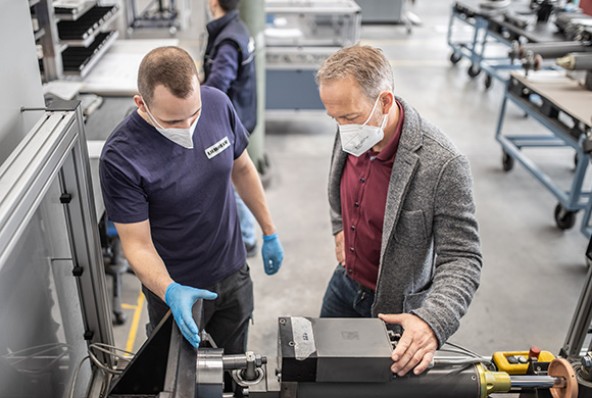
Research and development
As a high-tech company, Liebherr pursues the goal of making a decisive contribution to shaping technological progress in sectors relevant to the Group. Liebherr invested € 512 million in research and development last year. The bulk of this was used in the development of new products. A large number of joint research projects with universities, other higher education institutions and research institutes were initiated and continued.
Throughout the year 2020, research and development activities focused heavily on the topic of alternative drivetrain technologies. The Liebherr product portfolio now includes multiple fully and partially electric machines and components in product segments such as Mobile and Crawler Cranes, Concrete Technology, Mining and Aerospace and Transportation Systems. These include the world’s first battery-powered crawler cranes, the LR 1250.1 unplugged and the LR 1200.1 unplugged, as well as Liebherr's first fully electric truck mixers, the ETM 1005 and the ETM 1205. Liebherr also worked with VA Erzberg to develop a trolley assist system for the T 236 diesel-electric mining truck. Aircraft manufacturer Aerion chose Liebherr as the developer and supplier for the air management system of its new AS2 supersonic business jet. One of the system’s key components will be an electrical air conditioning pack, which contributes to more efficient and greener aircraft operation.
Digitalisation was another focal point of R&D activities. With the help of the Liebherr Remote Service App, a mobile harbour crane of the LHM 420 type was assembled in Campana (Argentina) in May – remotely from Germany for the first time ever. Likewise, in the Refrigeration and Freezing product segment, digitalisation accounted for a major proportion of development activities. This included smart monitoring, in particular, which allows for the monitoring of appliances with a web-based dashboard in research and laboratories, among other things. Liebherr’s Refrigeration and Freezing product segment opened a new location in Ulm (Germany), from which the sales and service Germany and digitalisation departments operate. With its start-up atmosphere, the new Digital Hub is intended to appeal to the digital specialists of the future.
Liebherr is a founding member of the Center Construction Robotics project, which was granted a 10,000 m² plot by RWTH Aachen University in 2020 for a model construction site. Here, an interdisciplinary team of scientists from RWTH Aachen will work with a consortium of European industry leaders to study new construction processes, products, connected machines, robotics and software solutions as well as new training, working and communications concepts.
Investments € m
Investments
The Group has traditionally emphasised the importance of making regular investments in its production facilities and its global distribution and service networks. Last year, the Group invested € 605 million, a decrease of 20 % or € 151 million compared to last year. Offset against this was depreciation of € 543 million.
One focus of investment in the year under review was the expansion and modernisation of company locations and the intensification of Liebherr’s global market presence.
Depreciation € m
In Panama City Liebherr Panama S.A. began building its new headquarters. The company focuses on mining. In Kempten (Germany) Liebherr-Verzahntechnik GmbH opened the “Liebherr Tech-Center”, where high-quality automation systems are tested and demonstrated in a 700 m² test hall.
In the Aerospace and Transportation Systems product segment, Liebherr-Transportation Systems (China) Co., Ltd. started operations at its new production site in Pinghu (Zhejiang Province), which develops, produces and services components and systems for rail transport in China and worldwide. Investments were also made in the Components product segment. To meet demand in the Asian market, a new factory for components is to be built in China. In addition, preparations are under way to begin the assembly of gears in India.
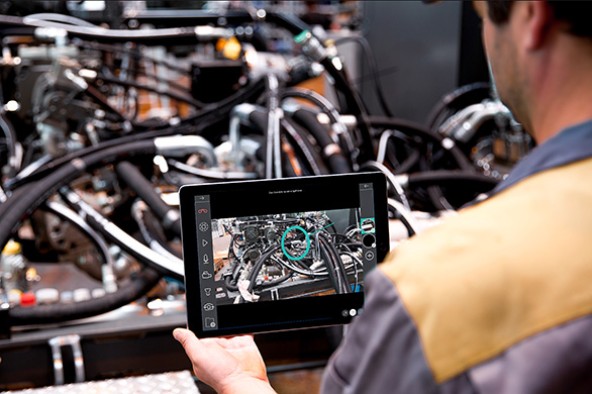
Risk management system and internal control system
In order to ensure the sustainable success of the Group, opportunities and risks are identified at an early stage to be evaluated and controlled. The Group has a continually optimised risk management procedure in place, and an internal control system to help it meet operational, market-related and legal requirements. To ensure the integrated recording, analysis and evaluation of risks, all managers responsible for the risk management and internal control systems used in the individual Group companies are involved. Risks are identified and assessed locally in the individual companies, then countermeasures to limit the risks are introduced and the impacts are evaluated.
This localised approach also makes it possible to identify and assess areas of opportunity efficiently. The information gained about market-related and technological developments is used in opportunities management to reach decisions about future areas of business and production processes. At the corporate level, the current risk situation is regularly reviewed and the effectiveness of the systems and processes used is assessed. The internal audit department monitors compliance with Group guidelines and the implementation of the risk management and internal control systems.
Supplementary report
Events of particular significance which occur after the reporting date should be recorded here, together with their expected impact on the Group’s assets, financial position and earnings. The Liebherr Group had no such events to report after the end of the 2020 business year.
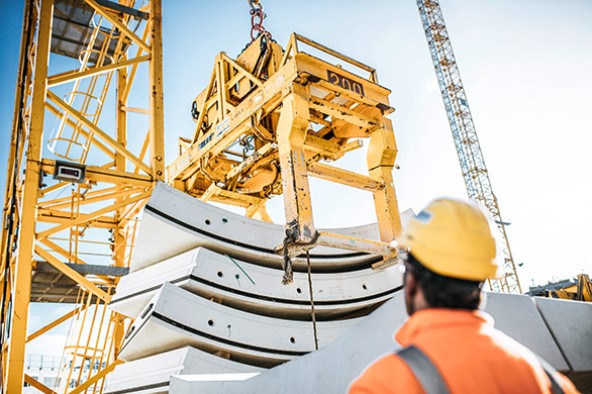
Outlook: 2021
The International Monetary Fund predicts that the global economy will grow by 5.5 % in 2021. This reflects the expectation of a vaccine-driven pick-up in economic activity later in the year along with additional stimulus programmes announced in several major economies.
The World Bank is similarly optimistic, predicting a global economic recovery with a growth rate of 4 %, assuming that coronavirus vaccinations will become increasingly available throughout the year. In its Global Economic Prospects study published in January 2021, the World Bank stressed that this recovery could be endangered if policymakers fail to get the pandemic under control and implement investment-friendly reforms.
The World Trade Organisation expects a 7.2 % growth in global trade in 2021. According to the research network Euroconstruct, global construction volume declined by 7.8 % in 2020 due to the coronavirus pandemic. A modest recovery of 4.1 % is expected in 2021. In general, the construction industry is optimistic about the future. Following the heavy setbacks the industry suffered in 2020, the International Air Transport Association (IATA) predicts further uncertainty in 2021. Despite the worldwide launch of vaccination campaigns, the number of pre-booked flights at the beginning of the year was still 60 % below last year.
In summary, it should be noted that due to the ongoing coronavirus pandemic and the many associated influencing factors, business development in 2021 will continue to be characterised by uncertainty for some time. However, it can be assumed that certain sectors will recover in the course of the year and in part approach the pre-pandemic level.

Individual opportunities and risks
In order to illustrate the individual opportunities and risks, similar types of risks and opportunities have been grouped together.
Overall economic opportunities arise from the aforementioned global recovery of various industrial sectors. The Liebherr Group is active in many of them, and order intake has already developed favourably across various product segments in the first quarter of 2021. At the same time, there is still uncertainty about the speed of economic recovery, as it is still too early to tell how the pandemic and its macroeconomic impacts will continue to develop. For instance, it is unclear whether international trade will pick up or continue to decline, or whether the economic policies implemented by many governments can prevent debt from spiralling.
The sections on each of the product segments contain reports on the opportunities and risks relevant to that division. Specific cost variations due to increasing macroeconomic uncertainty or business cycles that cannot be directly passed on through contractual price indexation may pose risks that affect the Group's performance.
Market price risks arise from the operating business, in particular due to exchange rate and interest rate fluctuations. Liebherr monitors these risks continuously and uses appropriate financial instruments to hedge selected transactions. This means that the Group enters into financial transactions only when they are linked to its operational business activity or for hedging purposes. As a matter of principle, Liebherr does not engage in transactions of a speculative nature.
The global nature of our business activities, together with our broadly diversified product base and the risk management system in place in the Group, ensure that the relevant risks are controlled. Based on the currently available information, there are no further identifiable risks which could have a substantial detrimental effect on Liebherr's assets, financial position and earnings in the 2021 business year and threaten the continuity of the Group as a whole.
* Restatement first time adoption of IFRS 9 / 15 / 16

